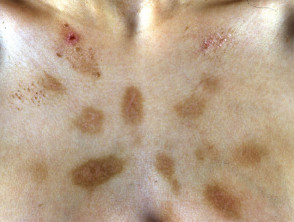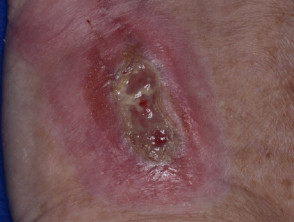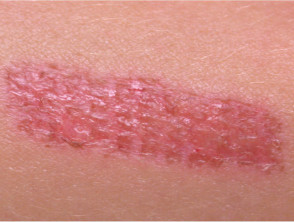What is dermatitis artefacta?
Dermatitis artefacta is a condition in which skin lesions are solely produced or inflicted by the patient's own actions. This usually occurs as a result or manifestation of a psychological problem. It could be a form of emotional release in situations of distress or part of an attention seeking behaviour. In very rare cases there may be an underlying attempt to secure an insurance claim.
The condition is also known as factitial dermatitis.
Who is at risk?
Dermatitis artefacta occurs more commonly in women than men. Usually affected women are in their teens or early adulthood and tend to be emotionally immature or have psychosocial or interpersonal difficulty. Intelligence of the patient varies but many have some superficial medical knowledge.
Features of dermatitis artefacta
Patients present with lesions that are difficult to recognise and do not conform to those of known dermatoses. Features of dermatitis artefacta include:
- Lesions are often in bizarre shapes with irregular outlines in a linear or geometric pattern.
- Lesions are usually clearly demarcated from surrounding normal skin.
- The appearance of lesions varies depending on methods used to injure the skin.
- Lesions range from red patches, swelling, blisters, denuded areas, crusts, cuts, burns, and scars.
- Lesions may be produced by a variety of mechanical or chemical means, including fingernails, sharp or blunt objects, lit cigarettes and caustic chemicals.
- Sometimes it is hard to distinguish dermatitis artefacta from natural diseases, particularly if lesions inflicted mimic those with a pathological cause.
- Lesions do not evolve gradually but emerge almost overnight without any prior signs or symptoms.
- They are usually found on sites that are readily accessible to the patient's hands, e.g. face, hands, arms or legs.
- The patient will usually deny that the rash is self induced.
Dermatitis artefacta
What treatment is available?
When dermatitis artefacta is suspected, direct confrontation should be avoided. Instead the doctor should create an accepting, empathetic and non-judgemental environment. Close supervision and symptomatic care of skin lesions will hopefully lead to a doctor-patient relationship in which psychological issues may gradually be introduced. If appropriate, psychiatric referral may be recommended, although this is often refused .
Resolution of the current underlying psychological problem will bring about a cure for the time being but dermatitis artefacta tends to wax and wane with the circumstances of the patient's life. To minimise occurrences of dermatitis artefacta, a patient should continue to see their doctor on an ongoing basis for supervision or support, whether or not lesions are present.


